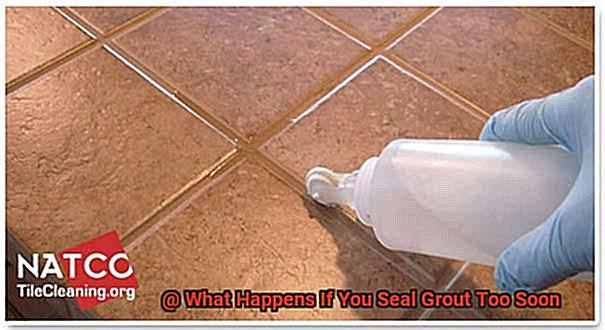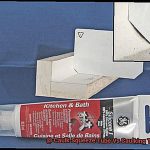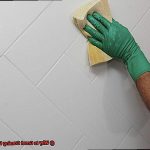Grout is the unsung hero of any tiling project.
It’s what holds everything together and adds that finishing touch to your flooring or walls. However, grout’s porous nature means it can absorb all sorts of unwanted substances like water and dirt.
That’s why sealing it after installation is a popular choice, but sealing too soon can cause more harm than good. If you’re itching to seal your grout, take a deep breath and wait a moment.
Sealing too soon can trap moisture, leading to mold growth, discoloration, and even disintegration of the grout itself. Plus, if the grout isn’t fully cured yet, sealing it will prevent air circulation and prolong drying time.
It’s crucial to wait until your grout is completely dry and cured before sealing it. But how do you know when that is?
In this article, we’ll explore the pitfalls of sealing too soon and provide tips on how to keep your grout in tip-top shape.
So, let’s start now.
Contents
What Is Grout and Why Do You Need to Seal It?
Grout is the cement, water, and sand mixture used to fill the gaps between tiles, providing stability and preventing moisture from seeping through.
Grout comes in different colors and textures, making it easy to match with any tile design. Sealing grout is a crucial step in maintaining the beauty and cleanliness of your tile installation.
Grout is porous and absorbs moisture, dirt, and other substances that can cause staining or discoloration over time. Sealing prevents these substances from penetrating the grout, keeping it looking clean and new for longer.
However, timing is essential when it comes to sealing grout. Sealing grout too soon after installation can lead to a host of problems.
One of the most significant risks is trapping moisture inside the grout, causing mold and mildew growth, as well as other types of water damage. The sealer may not adhere properly if the grout hasn’t had enough time to cure.
To avoid these potential issues, it’s crucial to wait at least 72 hours after installing grout before attempting to seal it. This allows enough time for the grout to dry completely and ensures that there is no moisture or air trapped inside.
Before sealing, make sure the grout is clean and free from any dirt or debris that could interfere with the sealant’s adhesion. Think of sealing grout like applying sunscreen – you want to make sure your skin is completely dry before applying it so that it can properly penetrate and protect.
Similarly, sealing grout too soon is like applying sunscreen to wet skin – it won’t provide the protection you need and may cause more harm than good. In conclusion, understanding what grout is and why it needs to be sealed is essential for anyone who has tile installations in their homes.
What Happens If You Seal Grout Too Soon?
Sealing grout is a crucial step in the tile installation process.
However, timing is everything when it comes to sealing grout. If you seal grout too soon after installation, it can lead to a host of problems that can be both time-consuming and expensive to fix.
One of the most common issues that arise from sealing grout too soon is that the sealer won’t properly adhere to the grout, leaving it vulnerable to stains and discoloration. It’s like trying to put on a sticker on a wet surface – it just won’t stick.
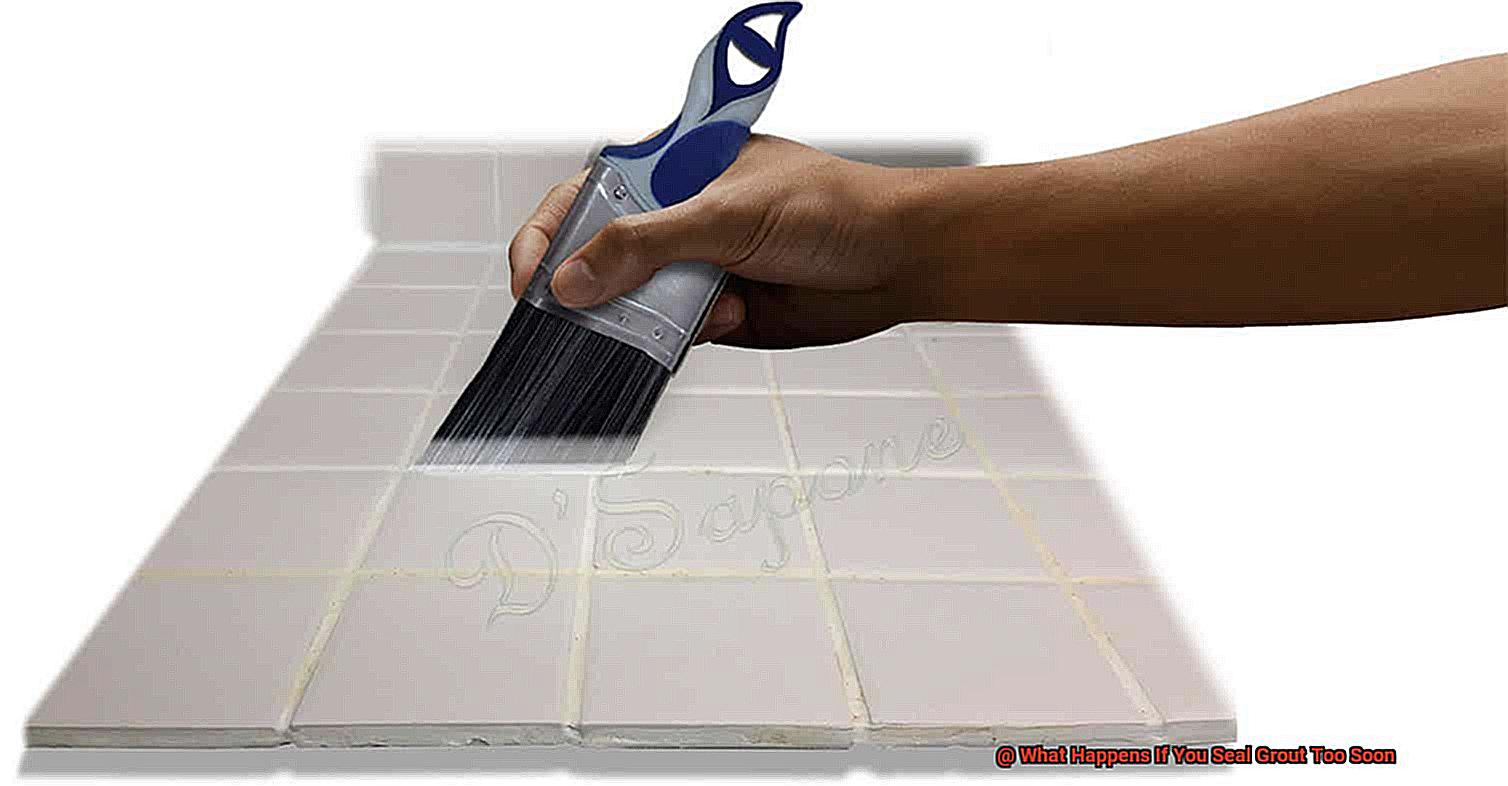
Another issue that can occur from sealing grout too soon is that it can trap moisture and air bubbles beneath the surface. This can cause the sealer to dry unevenly, leaving visible streaks or cloudy areas on the surface of the grout.
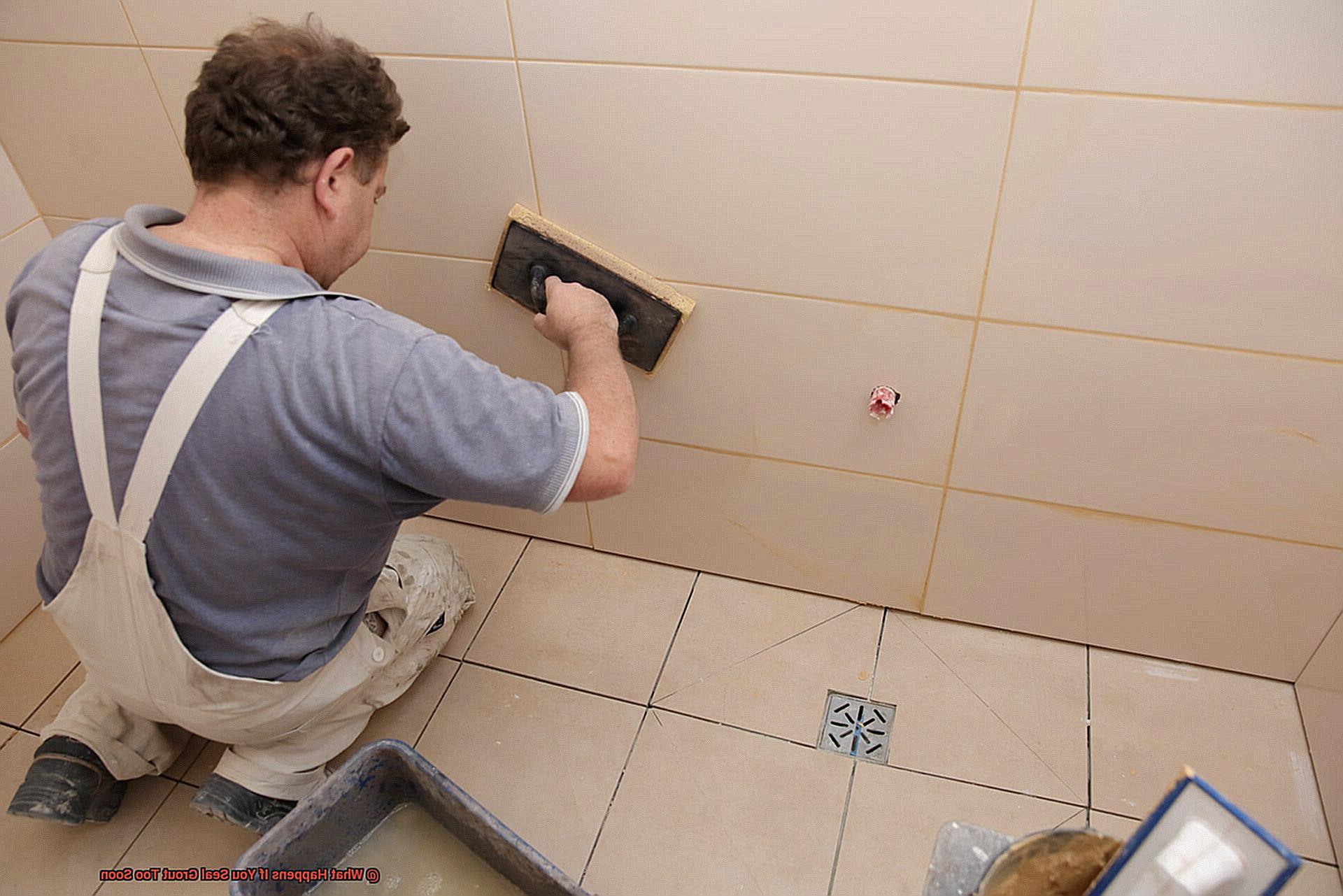
This can be frustrating, especially if you’ve spent hours installing your tiles. In some cases, trapped moisture can even lead to mold or mildew growth, which can be difficult to remove and may require professional cleaning services.
To avoid these issues, it is important to wait until the grout is fully cured and dry before applying sealer. The amount of time required before sealing grout can vary based on a number of factors, including the type of grout used, humidity and temperature of the room, and manufacturer’s recommendations.
Most experts generally recommend waiting at least 72 hours after installation before applying sealer. If you’re not sure whether your grout is ready for sealing, there are a few simple tests you can perform.
Another test you can try is pressing your fingertip into the grout – if it leaves an indentation, it needs more time to dry.
Risks Associated with Sealing Grout Too Soon
Grout is like the glue that holds your tiles together, but sealing it too soon can lead to several risks that can ruin your hard work.
Just like trying to frost a cake before it’s cooled down, sealing grout too soon can have dire consequences. The first risk associated with sealing grout too soon is improper setting.
Grout needs time to dry and cure properly before it can be sealed. If you seal it too soon, the moisture in the grout can become trapped, preventing it from drying out completely.
This results in a squishy, weak grout that is prone to cracking and crumbling – not what you want on your beautiful tiled surface. But wait, there’s more.
Sealing grout too soon can also lead to discoloration. When moisture is trapped in the grout, it can cause the color of the grout to change or become uneven, which is particularly problematic if you’ve chosen a light-colored grout that stains easily.
Another risk is that sealing grout too soon can trap dirt and debris in the grout lines. Wet grout is like a magnet for dirt and debris, and if you seal it too soon, this debris becomes trapped in the grout lines, making it harder to clean and giving your surface an unappealing appearance.
Lastly, sealing grout too soon can shorten your grout’s lifespan. Grout that hasn’t been given enough time to dry and cure properly is more prone to cracking and crumbling, which means you’ll have to replace it sooner than if you had waited for the right time to seal it.
So, what’s the bottom line? Wait at least 72 hours after installation before applying sealer to ensure that your grout sets properly and stands the test of time.
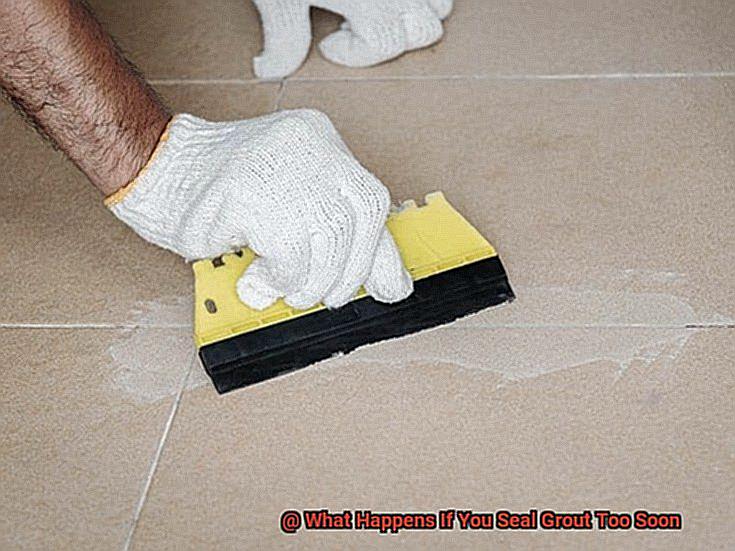
How Long Should You Wait Before Sealing Grout?
Just like a cake that needs to cool before frosting, grout needs time to dry before sealing. Sealing grout too soon can lead to moisture and debris getting trapped inside, resulting in mold and mildew growth and a patchy appearance.
To avoid these problems, it is crucial to wait for the proper time before applying a sealer. The general rule of thumb is to wait at least 48 hours after installing new grout before applying a sealer.
However, this time can vary depending on the type of grout used and the environmental conditions. For instance, if you live in a humid climate or have recently had rain, you may need to wait longer for the grout to dry fully.
Sealing grout too soon is like building a sandcastle too close to the water’s edge. Just as waves will erode the sandcastle’s foundation, moisture will weaken and erode the grout if it’s not given adequate time to dry.
Waiting for the proper time before sealing grout is crucial because it allows the grout to dry completely, preventing moisture from getting trapped inside. Are you using epoxy grout?
Be patient. Epoxy grout takes up to a week to cure fully before you can apply a sealer.
Rushing this process is like taking a cake out of the oven too soon – it may look done on the outside but could be undercooked on the inside.
So, waiting for the appropriate time before sealing grout is essential for maintaining its longevity and preventing potential problems.
Tips for Ensuring Your Grout Is Ready to Be Sealed
If you’re planning on sealing your grout, it’s important to ensure that it’s fully cured and dried first.
This will help to prevent moisture and debris from getting trapped beneath the surface of the sealant, which can cause discoloration, mold growth, and even damage to your tiles.
To help you determine if your grout is ready for sealing, we’ve compiled some expert tips that you can follow.
Follow the manufacturer’s instructions
Different types of grout have varying curing times, so it’s important to read the instructions carefully before sealing.
As a general rule, most grouts require at least 48 hours to fully cure before applying any sealer. It’s always best to err on the side of caution and wait a little longer if you’re unsure.
Conduct a water test
To check if your grout is ready for sealing, sprinkle a few drops of water onto the surface of the grout and watch how it behaves.
If the water beads up on the surface, then it’s likely not ready for sealing yet. This means that the grout is still holding onto moisture and needs more time to dry out.
On the other hand, if the water is absorbed into the grout immediately, then it may be ready for sealing.
Check for discoloration
If there are any discolorations or dark spots on your grout, this could be an indication that there’s still moisture trapped underneath the surface. In this case, it’s best to wait until these spots disappear before sealing your grout.
Use a moisture meter
If you have access to a moisture meter, use it to determine if there’s any trapped moisture underneath the surface of your grout. If the meter reads high levels of moisture, then it’s best to wait until your grout has fully dried out before proceeding with sealing.
TYztyvF51qI” >
Conclusion
In conclusion, sealing your grout is an important step in maintaining the appearance and hygiene of your tile installation.
However, sealing too early can result in a range of issues such as mold growth, discoloration, and even disintegration of the grout. It is vital to wait until your grout is completely dry and cured before applying sealant.
To ensure that your grout is ready for sealing, it’s best to follow these expert tips:
Firstly, carefully read and follow the manufacturer’s instructions as different types of grout have varying curing times.
Secondly, conduct a water test by sprinkling a few drops of water onto the surface of the grout to check if it’s still holding moisture.
Thirdly, inspect for any discolorations or dark spots on your grout which could be a sign that there’s still trapped moisture underneath.
Lastly, use a moisture meter if you have one available to determine if there’s any moisture lurking beneath the surface of your grout.
By following these tips and giving your grout sufficient time to fully cure and dry out, you can ensure that your sealant will bond effectively to the surface of your grout.
This will help safeguard your tiles from stains, mold growth and other forms of damage for many years to come.

